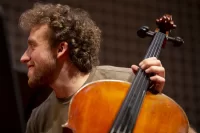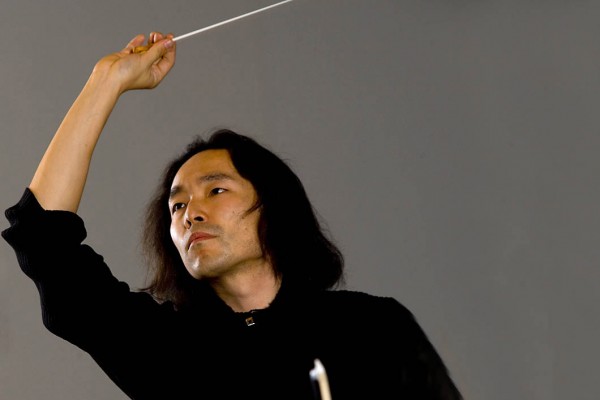
Student soloists featured in Bates College Orchestra concert
Three Bates seniors are featured as instrumental soloists in works by Franz Strauss, Max Bruch and Wolfgang Mozart as the Bates College Orchestra performs at 7:30 p.m. Saturday, March 9, in the Olin Arts Center Concert Hall, 75 Russell St.
Admission is free, but tickets are required. To reserve, please contact 207-786-6135 or olinarts@bates.edu.
The Bates orchestra is conducted by Hiroya Miura, associate professor of music. The March 9 program comprises five works:
Edvard Grieg’s music for Peer Gynt, Suite No. 1;
the first movement of Strauss’s Horn Concerto No. 1, featuring hornist Molly Bruzzese of West Hartford, Conn.;
Bruch’s Romance for Viola and Orchestra, with Jessica Cooper of Unionville, Conn., as soloist;
the first movement of Mozart’s Clarinet Concerto in A major (K. 622), showcasing clarinetist Catherine Tuttle of Pittsford, N.Y.;
and Maurice Ravel’s Ma mère l’oye (“Mother Goose Suite”).
“We hosted a concerto competition this year,” Miura explains, “and with the high level of musicianship these three students showed, I was glad to program not just one, but three varied movements with three soloists.”
The program is further distinguished by its literary connections, Miura points out. Grieg originally wrote the Peer Gynt material in 1875 as incidental music for Ibsen’s play, while Ravel’s 1910 Mother Goose Suite was a response to children’s stories by Mother Goose Tales author Charles Perrault and others.
“The Ravel and Grieg are phantasmagorical, colorful suites,” Miura says. “Perrault wrote Ma mère l’oye for his own children, but some of the stories are quite poignant with a great sense of irony—like many of these children’s fables are.
“Grieg shares that humor and irony, but more blatantly, and both composers treated these stories masterfully while carefully balancing the sense of fantasy and ironic humor.”
Franz Strauss, father of the better-known composer Richard, was celebrated as a master of the horn. The first of his two concertos for the instrument, this work in C minor was premiered by the composer in 1865.
Bruch is known as a composer in the German Romantic vein exemplified by Brahms. He published his Romance for Viola and Orchestra in F major (Op. 85), one of the few Romantic-era compositions with viola as lead instrument, in 1911.
A standard audition piece for clarinetists, the first movement of the Mozart concerto is an allegro. Written in 1791 and one of the composer’s last compositions, the concerto as a whole is characterized by the delicacy of the conversation between soloist and orchestra.





